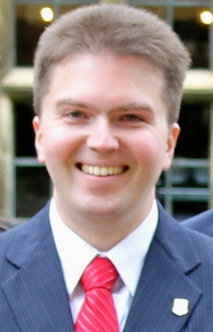 Dr. Ioannis Brilakis is a Laing O’Rourke Lecturer of Construction Engineering and the Director of the Construction Information Technology Laboratory at the Division of Civil Engineering of the Department of Engineering at the University of Cambridge. He completed his PhD in Civil Engineering at the University of Illinois, Urbana Champaign. He then worked as an Assistant Professor at the Departments of Civil and Environmental Engineering, University of Michigan, Ann Arbor (2005-2008) and Georgia Institute of Technology, Atlanta (2008-2012). He is a recipient of the NSF CAREER award, the 2013 ASCE Collingwood Prize, the 2012 Georgia Tech Outreach Award and the 2009 ASCE Associate Editor Award. Dr. Brilakis is an author of over 150 papers in peer-reviewed journals and conference proceedings, an Associate Editor of the ASCE Computing in Civil Engineering, ASCE Construction Engineering and Management, Elsevier Automation in Construction, and Elsevier Advanced Engineering Informatics Journals, and a past-chair and founder of the ASCE TCCIT Data Sensing and Analysis Committee, and the TRB AFH10 (1) Information Systems in Construction Management Subcommittee.
Dr. Ioannis Brilakis is a Laing O’Rourke Lecturer of Construction Engineering and the Director of the Construction Information Technology Laboratory at the Division of Civil Engineering of the Department of Engineering at the University of Cambridge. He completed his PhD in Civil Engineering at the University of Illinois, Urbana Champaign. He then worked as an Assistant Professor at the Departments of Civil and Environmental Engineering, University of Michigan, Ann Arbor (2005-2008) and Georgia Institute of Technology, Atlanta (2008-2012). He is a recipient of the NSF CAREER award, the 2013 ASCE Collingwood Prize, the 2012 Georgia Tech Outreach Award and the 2009 ASCE Associate Editor Award. Dr. Brilakis is an author of over 150 papers in peer-reviewed journals and conference proceedings, an Associate Editor of the ASCE Computing in Civil Engineering, ASCE Construction Engineering and Management, Elsevier Automation in Construction, and Elsevier Advanced Engineering Informatics Journals, and a past-chair and founder of the ASCE TCCIT Data Sensing and Analysis Committee, and the TRB AFH10 (1) Information Systems in Construction Management Subcommittee.
Virtualizing Infrastructure
Ioannis Brilakis, Ph.D.
University of Cambridge
Vertical and horizontal infrastructure is comprised of capital-intensive assets that need sizable budgets to design, construct and operate/maintain them. Cost reductions throughout their lifecycle can generate significant savings to all involved parties. Such reductions can be derived directly through productivity improvements or indirectly through safety and quality control improvements. Creating and maintaining an up-to-date electronic record of these assets in the form of rich Building Information Models (BIM) can help generate such improvements. New research is being conducted at the University of Cambridge on inexpensive methods for generating object-oriented infrastructure geometry, detecting and mapping visible defects on the resulting BIM, automatically extracting defect spatial measurements, and sensor and sensor data modelling. The results of these methods are further exploited through their application in design for manufacturing and assembly (DfMA), augmented-reality-enabled mobile inspection, and proactive asset protection from accidental damage. Virtualization methods can produce a reliable digital record of infrastructure and enable owners to reliably protect, monitor and maintain the condition of their asset.